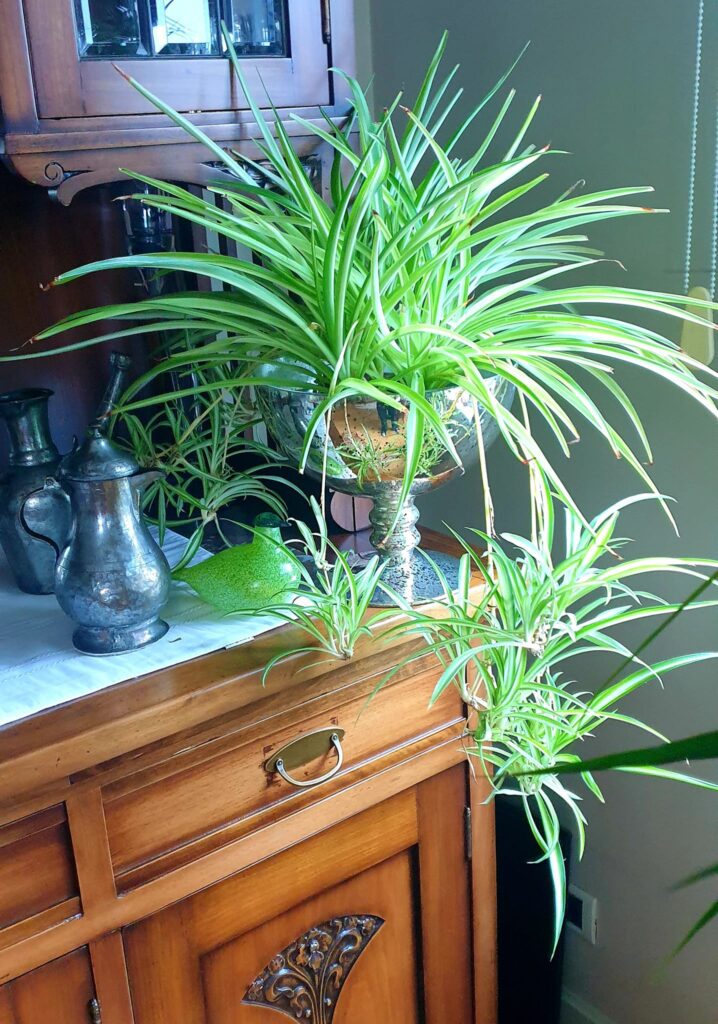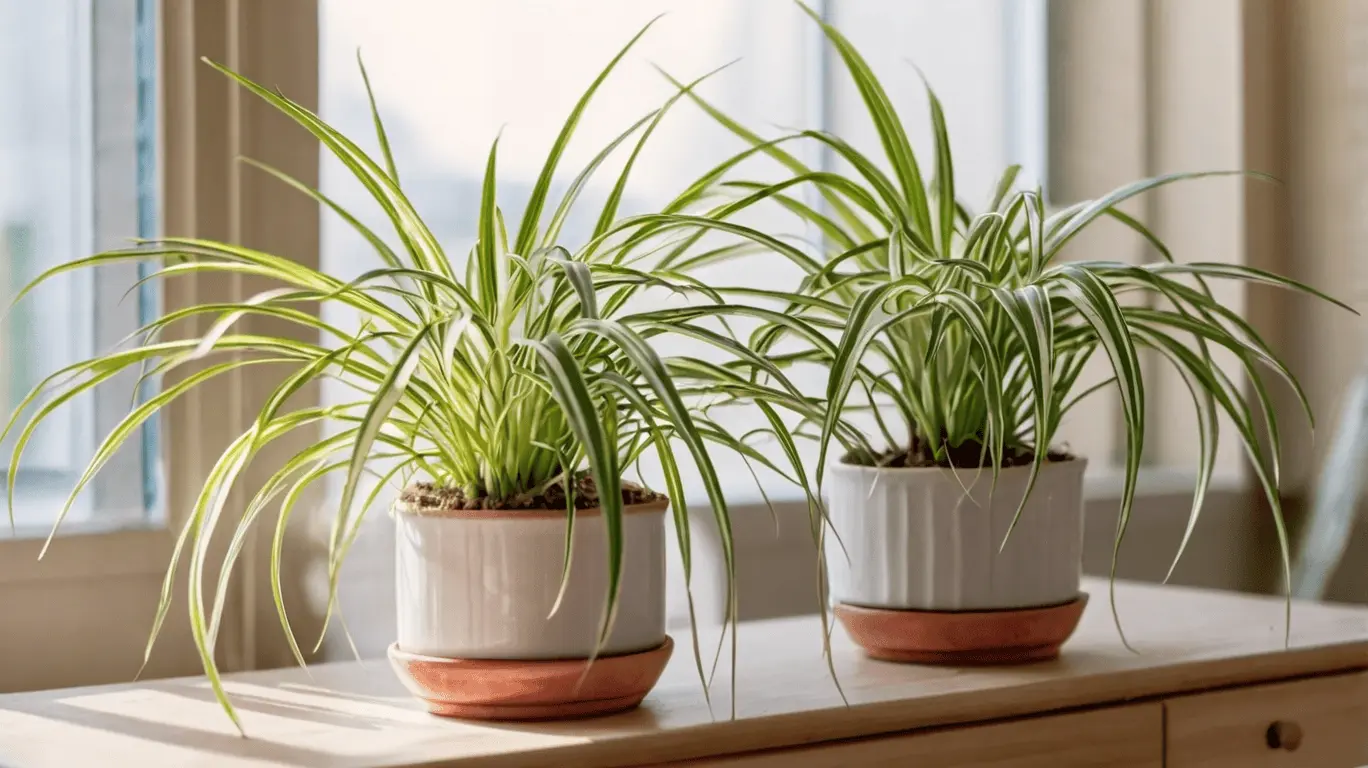The spider plant (Chlorophytum comosum) is one of the most popular and low-maintenance houseplants. Known for its long, arching leaves and ability to purify air, the spider plant is a favorite among beginners and experienced plant enthusiasts alike. Here’s a comprehensive guide on how to care for your spider plant.
Light Requirements
Spider plants thrive in bright, indirect sunlight. While they can tolerate some direct sunlight, excessive exposure may scorch their leaves. If placed in low light conditions, they may grow slower and produce fewer offshoots. A spot near a north- or east-facing window is ideal.
Watering Needs
Water your spider plant regularly but avoid overwatering. Allow the top inch of soil to dry out between waterings. Overwatering can lead to root rot, while underwatering may cause the leaf tips to brown. Using distilled or rainwater is preferable, as spider plants are sensitive to fluoride and chlorine in tap water.
Humidity and Temperature
Spider plants prefer moderate to high humidity levels. If the air in your home is dry, consider misting the leaves occasionally or placing a humidifier nearby. They thrive in temperatures between 65-75°F (18-24°C) but can tolerate slightly cooler or warmer conditions.
Soil and Potting
A well-draining potting mix is ideal for spider plants. A general-purpose houseplant soil with added perlite or sand ensures good drainage. Make sure the pot has drainage holes to prevent waterlogging.

Fertilizing
Feed your spider plant with a balanced liquid fertilizer every 2-4 weeks during the growing season (spring and summer). Reduce feeding in fall and winter when growth slows down.
Pruning and Maintenance
Trim brown leaf tips using clean scissors to keep your plant looking healthy. If the plant becomes too large, you can repot it into a slightly bigger container. Spider plants produce baby offshoots (spiderettes), which can be left on the plant or propagated into new plants.
Propagation
Spider plants are easy to propagate. Simply cut off a spiderette and place it in water or soil. If using water, wait for roots to develop before planting it in soil.
Common Problems and Solutions
- Brown leaf tips: Often caused by fluoride in tap water, dry air, or over-fertilization. Use filtered water and maintain proper humidity.
- Yellowing leaves: Could indicate overwatering. Ensure proper drainage and allow soil to dry between waterings.
- Pests: Spider plants are generally pest-resistant but may attract aphids or spider mites. Wipe leaves with a damp cloth or use insecticidal soap if needed.
Conclusion
Caring for a spider plant is simple, making it an excellent choice for any indoor space. By providing the right light, water, and occasional maintenance, you can enjoy a thriving and vibrant spider plant for years to come

